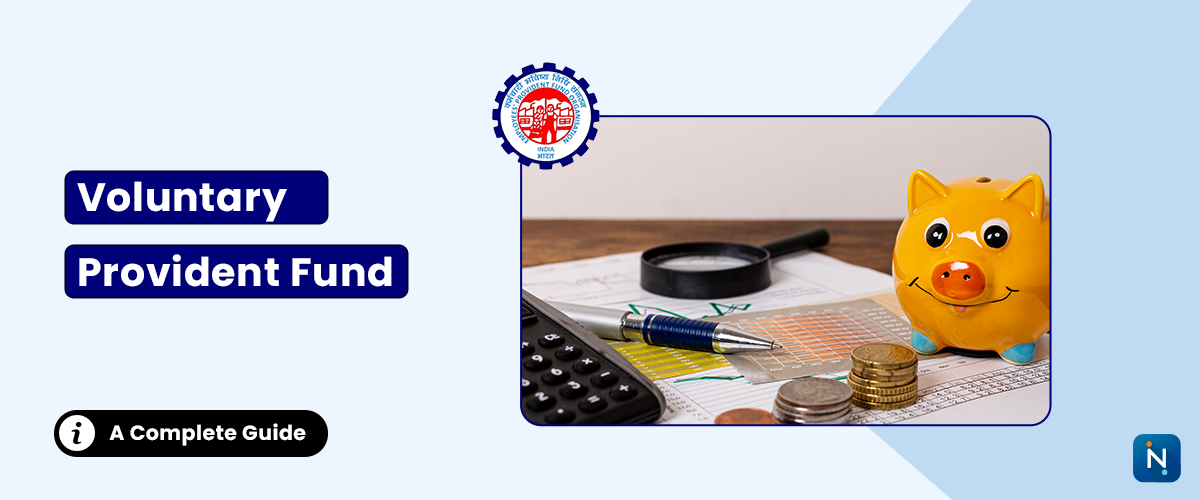Blogs > Voluntary Provident Fund (VPF): A Smart Way to Boost Your Retirement Savings

Voluntary
Provident Fund (VPF): A Smart Way to Boost Your Retirement Savings
The Voluntary
Provident Fund (VPF) is an extension of the Employees’ Provident Fund
(EPF) that allows salaried employees to contribute more than the mandatory
12% of their basic salary towards their provident fund account. This extra
contribution earns the same interest rate as EPF and comes with
attractive tax benefits.
For
employees looking to build a larger retirement corpus with minimal risk,
the VPF is one of the most secure investment options in India.
What is
Voluntary Provident Fund?
The VPF
is a voluntary savings scheme where employees can contribute up to 100% of
their basic salary plus Dearness Allowance (DA) over and above the
mandatory EPF contribution.
Key
Features of VPF
|
Feature |
Details |
|
Eligibility |
Only
salaried employees who are EPF members |
|
Contribution
Limit |
Up to 100%
of basic salary + DA |
|
Interest
Rate |
Same as
EPF (e.g., 8.25% for FY 2024–25) |
|
Tax
Benefits |
Contribution
up to ₹1.5 lakh per year under Section 80C; Interest exempt from tax (subject
to limits) |
|
Risk
Level |
Very low —
backed by the Government of India |
|
Tenure |
Till
retirement or withdrawal under EPF rules |
Benefits
of Voluntary Provident Fund
1.
Higher Retirement Corpus – Boost your savings with compound interest.
2.
Tax Savings –
Claim deductions under Section 80C and enjoy tax-free returns (within
the ₹2.5 lakh annual PF contribution limit).
3.
Safe Investment
– Risk-free, as it’s backed by the government.
4.
Same Interest as EPF – No compromise on returns despite higher contributions.
How to
Apply for VPF
You can
start VPF contributions by simply requesting your employer to deduct an
additional amount from your salary every month. This extra amount will be
deposited into your EPF account under the VPF head.
Withdrawal
Rules for VPF
Withdrawal
is allowed only:
For
withdrawal process, refer: EPF Form 31 – Partial Withdrawal Guide.
VPF vs
PPF: What’s the Difference?
|
Parameter |
VPF |
PPF |
|
Eligibility |
Only
salaried employees |
Any Indian
citizen |
|
Interest
Rate |
Same as
EPF |
Declared
quarterly by the government |
|
Lock-in
Period |
Till
retirement or resignation |
15 years |
|
Employer
Contribution |
None |
None |
|
Tax
Benefits |
80C +
Tax-free interest |
80C +
Tax-free interest |
IndiaLends
Tip
VPF is great
for safe, long-term savings. But if you need funds for urgent requirements,
instead of withdrawing from your PF and reducing your retirement corpus, you
can check instant personal loan offers from IndiaLends with minimal
documentation and quick approval.
FAQs on
Voluntary Provident Fund
Q1. Is
VPF contribution mandatory?
No, it is completely optional.
Q2. Can I
change my VPF contribution amount?
Yes, you can increase, decrease, or stop your contributions by informing your
employer.
Q3. Is
VPF better than PPF?
For salaried employees, VPF usually offers a higher interest rate and easier
contribution process compared to PPF.
Q4. Is
the interest on VPF taxable?
Interest is tax-free up to an annual PF contribution of ₹2.5 lakh. Beyond that,
it becomes taxable.
Q5. Can I
withdraw from VPF before retirement?
Yes, but only under EPF withdrawal rules and using the appropriate EPF forms.